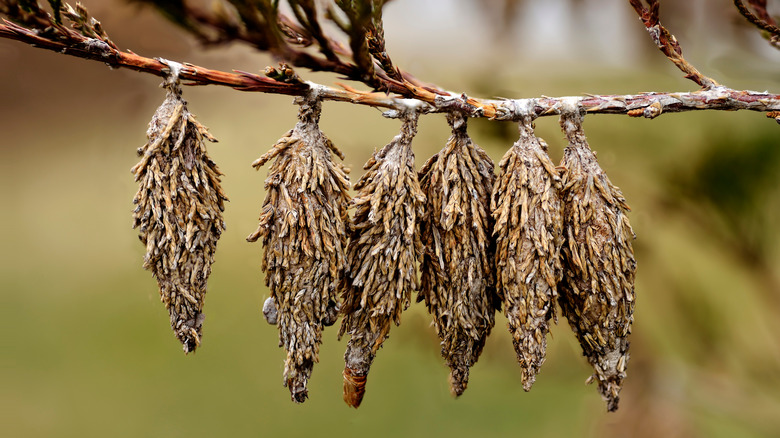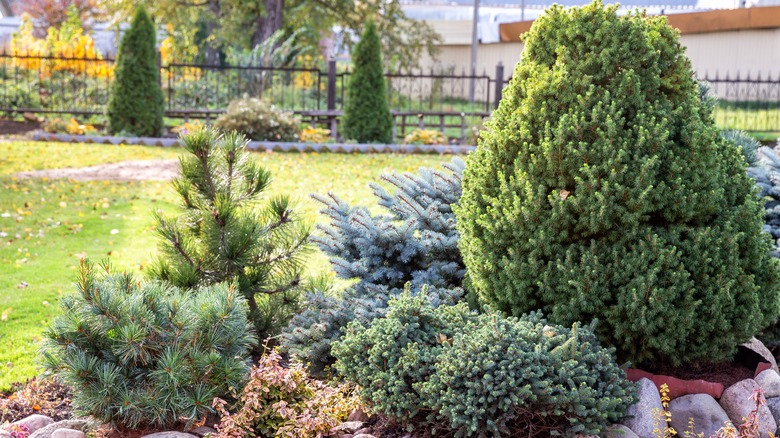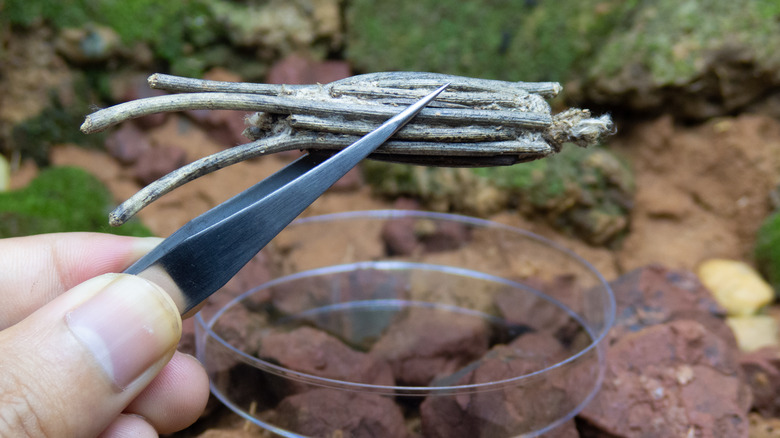This Popular Tree Is A Bagworm Magnet (And You May Want To Avoid Planting It)
If there was ever a real-life version of those cartoonish, tiny worms that could gobble up an entire tree and leave nothing more than a toothpick behind, it would be the bagworm. These unique-looking caterpillars are named after the protective cocoon they haul around like baggage. Not only can these pests cause considerable damage to your garden, but their sacs look like dying leaves, making spotting them not always the easiest thing. If you want to keep your garden safe from bagworms, then one tree you should avoid planting is juniper. Junipers are at the top of the caterpillars' hit list.
Juniper trees are stately plants that anyone would ordinarily love to have in their yard. These gorgeous trees have a distinct aromatic scent, and maintaining them is easy since they can self-prune, dropping dead or diseased parts on their own. Unfortunately, junipers tend to be targeted by bagworms. You'll notice them as your tree starts to brown and the dread sets in.
Bagworms can spread from the juniper to other plants
Bagworms are resilient — great for them, bad news for your garden. While the colder months typically drive away other pests, these bad boys' eggs can overwinter in the cocoons left behind by adult females, all snug and warm. Inside each of those cocoons is up to 1,000 eggs. The eggs stay in the cocoon until around May to June, when they hatch and continue wreaking havoc on the tree by devouring its leaves or needles. If enough defoliation occurs, the plant can die.
If you're thinking that things can't get any worse — they can. Thanks to their silk and the wind, newly hatched larvae can spread to other plants. They primarily feed on evergreen trees, and although they have favorites like juniper, they will gnaw on other types of trees and shrubs as well. If you're contemplating what tree to choose for your yard and are worried about bagworms, steer clear of the juniper. However, since these pests will attack other plants anyway, you should also keep your eyes peeled for any sign of them on your property.
How to get rid of bagworms
Despite the trouble that bagworms cause, having them in your yard is not the end of the world. They can decimate your garden if left unchecked, but if you stay vigilant, it won't come to that. There are a number of ways to keep the pests off of your property.
The simplest way to get rid of bagworms is by picking them off like fruit. The best time to do this is when they are inactive, which is during the winter season. Make some time to go through the whole tree if you can and remove every last cocoon you see. Gather them together and burn them safely. You have to do this before they hatch so that they don't spread. Make sure you burn every cocoon because the eggs inside can remain viable if the cocoon simply falls to the ground.
If you're okay with using pesticides on the bagworms, a specific window of time is best for that, too. Because the pesticides should be used on the leaves that the caterpillars will consume, you'll have to wait until they hatch before applying the pesticide to the greenery. This has to be done while the cocoons are small — although most insecticides will get rid of them, they won't work as well once the cocoons get larger.


